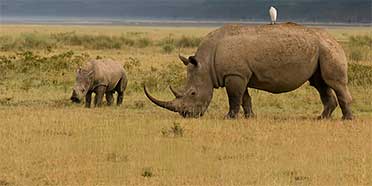
Safari Tours to Lake Nakuru NP
-
![4-Day Luxury Kenya Safari in Lake Nakuru & Maasai Mara]()
4-Day Luxury Kenya Safari in Lake Nakuru & Maasai Mara
$4,599 to $5,099 pp (USD)
Kenya: Private tourLuxuryLodge & Tented Camp
You Visit: Nairobi (Start), Lake Nakuru NP, Masai Mara NR, Nairobi (End)

Wayfairer Travel
4.8/5 – 183 Reviews
-
![7-Day Spirit of Kenya]()
7-Day Spirit of Kenya
$2,310 to $3,300 pp (USD)
Kenya: Private tour
Mid-range Lodge & Tented CampYou Visit: Nairobi (Start), Lake Nakuru NP, Masai Mara NR, Lake Naivasha (Naivasha), Amboseli NP, Mombasa Beaches, Mombasa (End)

Safari Talk Tours
5.0/5 – 15 Reviews
-
![10-Day From Kenya to Tanzania - Mid-Range]()
10-Day From Kenya to Tanzania - Mid-Range
$4,310 to $5,810 pp (USD)
Kenya & Tanzania: Private tour
Mid-range Lodge & Tented CampYou Visit: Nairobi (Start), Lake Nakuru NP, Masai Mara NR, Serengeti NP, Ngorongoro Crater, Lake Manyara NP, Arusha (End)

Soul of Tanzania
5.0/5 – 501 Reviews

 Kenya Parks
Kenya Parks











